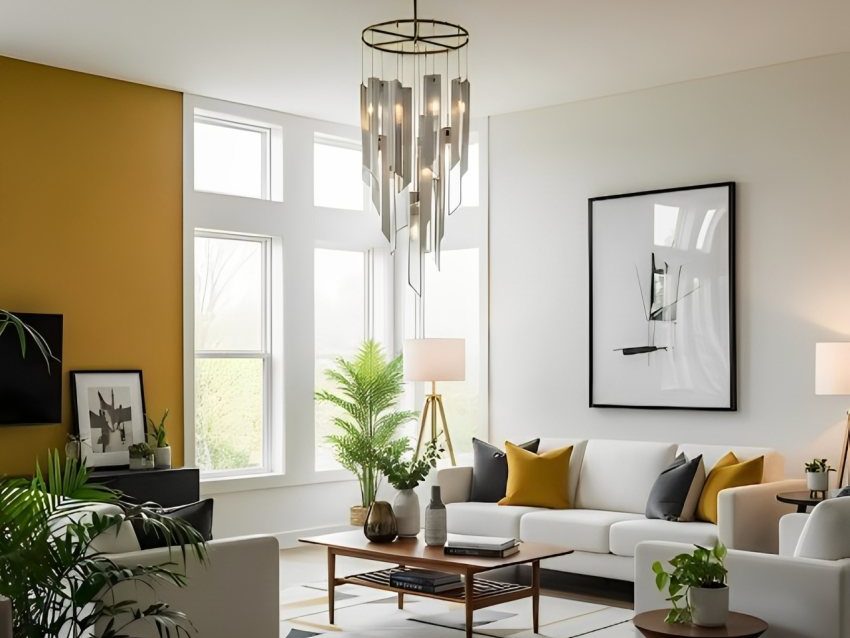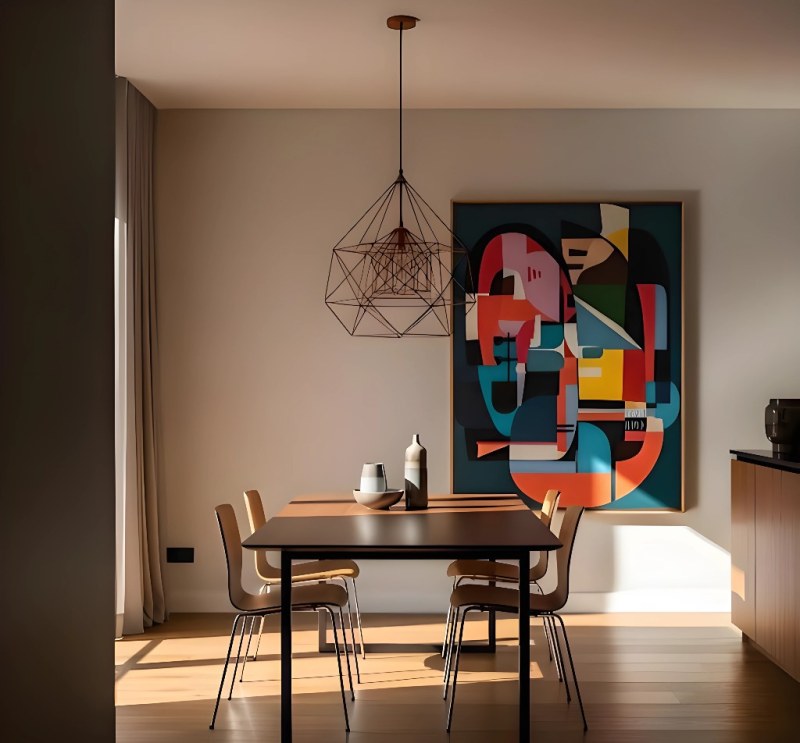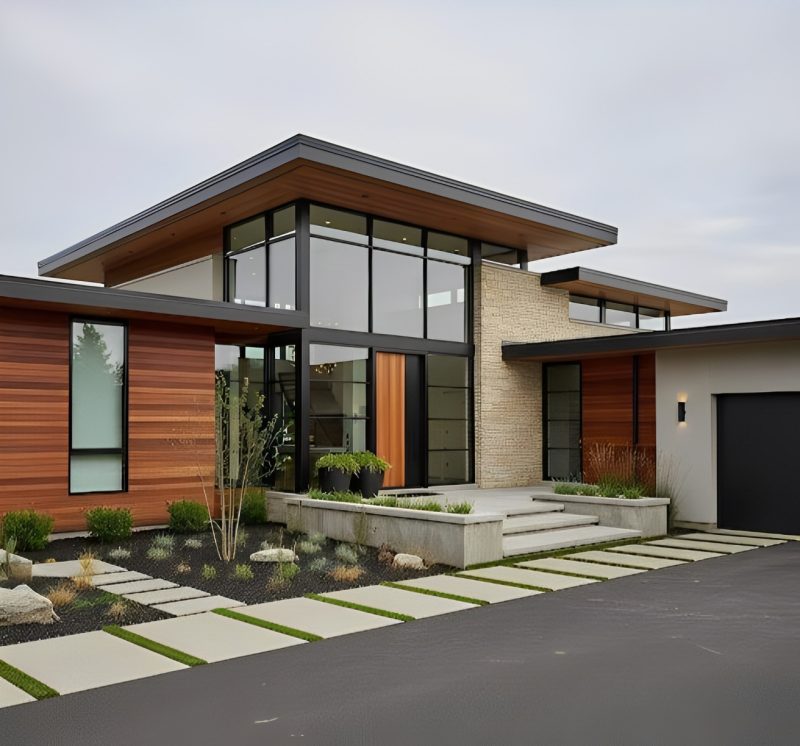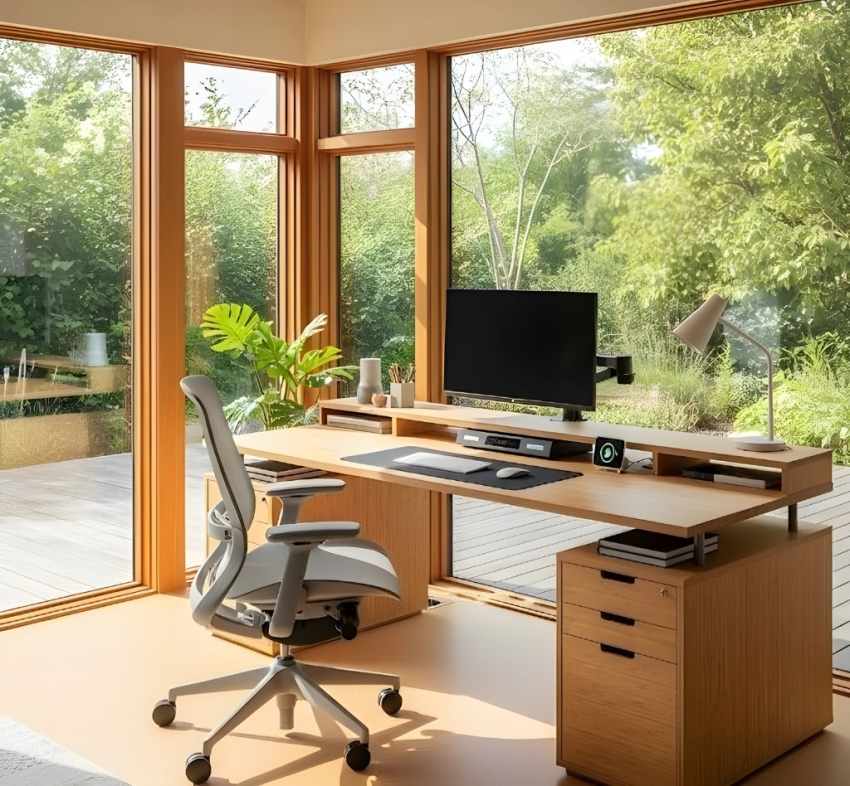
Ever walked into a home and just felt. current? You were probably under the influence of contemporary home style. It’s a look that feels fresh, yet sophisticated, and precisely right for the times. But just what is it? And how do you bring this highly coveted appearance into your own home without it feeling sterile or impersonal? If you’re looking to update your surroundings with a style that’s both timelessly sophisticated and unabashedly modern, then familiarizing yourself with contemporary home style is where you begin. This guide will explore in-depth its defining characteristics, examine inspiring home interior design ideas, and even assist you in telling it apart from other trending styles. Let’s take this design journey together!
So What IS Contemporary Home Style? Stripping Away the Onions
The term “contemporary” actually means “of the moment” or “existing or occurring now.” So, unlike period styles like Victorian or Art Deco, contemporary home style is not fixed. It’s evolving all the time. It reflects the design trends of the present day. While it’s often confused with “modern” design (which refers to a specific moment in history, more or less the early to mid-20th century), contemporary design is more fluid. It borrows some things from modernism, such as clean lines and simplicity, but also borrows new ideas, materials, and technologies as they arise.
Think of it as a living, breathing design language. What “contemporary” feels like now will subtly change in a decade’s time, no doubt. However, there are some essential principles that generally define the contemporary home style we know and love today.
Key Elements of Contemporary Design: The Defining Factors
So what are the hallmarks that shout “contemporary”? Let us break them down:
* Clean Lines and Simplicity: Possibly the most critical element. Modern rooms are uncluttered. Furniture bears simple, straight lines or gentle curves, rather than ornate details. Think “less is more,” yet with intention. Everything serves a purpose and contributes to the overall aesthetic without introducing fuss.
* Open Spaces and Natural Light: Modern homes have open floor plans, creating a feeling of space and flow. Extremely large, unadorned windows are prominent, allowing natural light to flow into the interiors and become part of the design itself. This integrates the indoor space with the exterior, a key component of modern home design.
* Neutral Color Schemes with Bold Accents: The foundation of a modern color scheme is typically neutral – think shades of white, cream, beige, gray, and black. These offer a sleek, serene backdrop. But modern home design isn’t afraid of color! Bold, considered bursts of vibrant color are typically introduced through artwork, accent furniture, or decorative accessories.
* Emphasis on Texture: Since the color palette is mostly neutral, texture plays a key role in adding depth and interest. You’ll see a mix of materials: smooth metals like stainless steel and chrome, some stone or concrete, warmth from natural wood (typically light or very dark and glossy), and lush textiles like velvet, wool, or linen. Textures are layered in a key modern strategy.
* Natural and Sustainable Materials: One of the new directions in contemporary home design is the utilization of natural and sustainable materials. Think of bamboo flooring, reclaimed wood, recycled glass, and energy-efficient fittings. This reflects a broader societal movement towards environmental consciousness. (Learn more about sustainable building materials at Green Building Council).
* Statement Lighting: Modern design lighting fixtures are often sculptural and artistic. They can serve as a room’s centerpiece, from dramatic pendant lights over a dining table to sleek track lighting or cleverly integrated LED strips.
* Minimalism in Detailing: There is no over-accessorizing, thick drapery, or cluttered surfaces. Rather, beauty is in the form and function of the pieces chosen and the thoughtful use of space.
Are you starting to see how these elements combine to create a look that is both sophisticated and inviting?

Diving Deeper: Modern Home Style Interior Design
Now that we have the fundamentals covered, let’s dive into how modern home style looks in terms of specific interior design choices. How do you choose furniture, color, and accessories to make it work?
Building the Modern Color Scheme
As mentioned, neutrals are your friend. Don’t be “dull,” though! The beauty of a neutral contemporary home style color scheme is in its versatility.
* Base Colors: Whites may be sharp and bright or creamy, beiges, pale grays, rich charcoals, and black can also be freely applied to walls, large furniture items, and floors.
* Accent Colors: This is where you can add personality! Imagine one strong accent wall, a bold sofa, dramatic artwork, or bright cushions. Sunroom colors that work well include deep blues, rich greens, sunny yellows, or perhaps a blazing red. The rule of thumb is to use them sparingly but effectually.
* Monochromatic Magic: A sophisticated way of designing modern home spaces is to have a monochromatic color scheme, using various shades and tones of a single color. It is highly texture-dependent to keep it away from flatness.
What colors do you like when you think of a calming yet refreshing room?
Furniture: Form, Function, and Flair
Furniture within a modern home design setting is characterized by:
* Simple Lines: Look for sofas, chairs, and tables with straight surfaces, flat legs, or gentle unflorid curves. Avoid ruffles, skirts, or excessive carving.
* Natural Materials: Wood (typically light like maple or ash, or dark like walnut or espresso), metal (stainless steel, chrome, nickel), glass, and stone are common.
* Function and Comfort: Form is essential, but not at the expense of comfort. Sofas are big but do not lose their slender profiles. Storage is usually integrated or discretely hidden to maintain a clean silhouette.
* Negative Space: Room between furniture is just as crucial as the furniture. Don’t overfill. Provide pieces with space to “breathe.”
For inspiration for individual furniture pieces that fit into this aesthetic, our Minimalist Living Room Ideas piece may be helpful.

Lighting: More Than Just Illumination
Lighting in contemporary residential design is not just functional; it’s art.
* Natural Light Maximization: Floor-to-ceiling curtains or retractive blinds replace heavyweight drapes.
* Statement Pieces: A sculptural pendant light, a floor lamp that steals the spotlight, or a chandelier as an art piece can be the room’s focal point.
* Layered Lighting: Blend ambient (overall) lighting, task lighting (for specific tasks like reading), and accent lighting (to highlight architectural detail or artwork).
* Smart Technology: Integrated systems for lighting, typically controllable through smartphone, are increasingly mainstream in contemporary home design, allowing for customized mood and energy efficiency.
The Role of Materials and Textures
To prevent a contemporary space from feeling austere or sterile, a thoughtful mix of materials and texture is essential.
* Floors: Polished concrete, large-format tiles, pale or dark wood, and stone are typical choices. Geometric-pattern or deep-texture area rugs (like shag or sisal) can define zones and add warmth.
* Walls: Besides paint, consider textured wallpaper on one accent wall, wood paneling, or painted/unpainted exposed brick for that industrial-chic feel.
* Textiles: Mix up textures in your fabrics: a sleek leather armchair, a velvet couch, linen pillows, a thick knit throw. This textured tactile combination is key to a warm modern home style.
Do you prefer to marry smooth, clean surfaces with warmer, more textured elements? For me, it is this contrast that makes modern design so unique.
Modern Home Style House Plans: Constructing from the Ground Up
When you are designing or choosing a new home, modern home style house plans offer challenging choices. These plans essentially capture the spirit of the style at the architectural level.
Exterior Characteristics of Contemporary Homes
The exterior often foreshadows the contemporary home design within:
* Asymmetrical Composition: Unlike the symmetrical fronts of older homes, contemporary houses often have dynamic, asymmetrical compositions.
* Varied Rooflines: Flat roofs, shed roofs, or gabled roofs with striking angles are common to many.
* Expansive Windows: Floor-to-ceiling windows, sliding glass doors, and clerestory windows blur the lines between in and out.
* Blending of Materials: Integrating wood siding, stucco, stone, concrete, and metal panels will provide visual interest and texture.
* Landscaping Emphasis: Geometric landscaping is typically uncomplicated and complements the clean lines of the residence.

The Charm of Open Floor Plans
One of the most common features of contemporary home style house plans is the open concept. Kitchens, dining rooms, and living rooms will flow into one another, giving way to a spacious, light-filled room perfect for today’s lifestyle and entertaining. The look also optimizes natural light distribution. Find out more on how to optimize such spaces by going to Designing for Open Concept Living at Serenihouse.com.
Indoor-Outdoor Relationship
The design of today tends to incorporate a focus on a strong connection with the outdoors. This can be achieved through:
* Large patios or decks which are essentially outdoor living rooms.
* Built in courtyards within the home footprint.
* Seamless transitions by using the same flooring material indoors to outdoors.
This nature-inspired, or biophilic, design, which is in contact with nature, is becoming a increasingly common trend in home style these days and is believed to be healthy. (For more on biophilic design, read reports from Terrapin Bright Green, etc.)
Traditional vs. Contemporary Home Style: What’s the Real Difference?
This is a common cause of confusion! Though both can be beautiful, they differ.
* Decoration: Traditional styles (e.g., Colonial, Victorian, or Tuscan) embrace ornamentation, detailed moldings, wealthy patterns, and often, a feeling of history and formality. Modern home style favors simplicity and restraint in ornamentation.
* Lines: Traditional tends to feature curved, complex lines. Modern is all about unadorned, straight, or just barely curved lines.
* Materials: Traditional homes usually employ traditional materials like opulent woods, luxurious fabrics (damask, brocade), and aged-finished metals. Modern design makes use of a broader, more contemporary palette, featuring narrow metals, glass, concrete, and eco-friendly options.
* Color Palettes: Traditional palettes can be rich and multi-planed with deeper jewel tones or intricate patterns. Modern palettes, as indicated, feature more neutrals with purposeful bold highlights.
* Formality: Traditional design can sometimes be more formal. Contemporary home style yearns for sophistication but at the same time a relaxed and livable look.
Ultimately, contemporary home style has less to do with adhering to a rigid set of old-fashioned guidelines and more to do with embracing the essence of today in design.

Is Contemporary Home Style Your Best Bet?
Choosing a design style is very much a personal choice. Contemporary home style is for those who:
* Appreciate simplicity and clean environments.
* Appreciate bright, airy spaces with plenty of natural light.
* Are drawn to new trends, materials, and technologies.
* Like a sophisticated but comfortable and functional home.
* Want a background against which individual pieces of furniture or art can shine.
However, if you adore intricate details, bountiful collections, and a very warm, layered, “lived-in” feel with lots of patterns, a completely modern home style can be too cramped. But remember, design is all or nothing isn’t a rule! Contemporary elements can always be introduced to a more eclectic mix. What are your home design deal-breakers?
The Evolution of “Contemporary”: Staying Current
Since modernization of home design is all about the “now,” it’s in trend mode all the time. Some of the current trends affecting modern design are:
* Sustainability: Maximizing the use of green materials, energy-efficient technologies, and a greater emphasis on being close to nature (houseplants, natural light, vistas to the outdoors).
* Smart Home Integration: Integrating technology for lighting, climate, security, and entertainment seamlessly.
* Warm Minimalism: Moving away from cold, harsh minimalism and towards a softer, more hospitable type with warmer neutrals, softer textures, and comfortable furniture. This is making contemporary home design more habitable and human-friendly.
* Curved Lines: While clean lines dominate, softer curves on furniture (e.g., rounded couches, curved chairs) are back, adding an organic softness.
* Personalization: Greater emphasis on making the space uniquely “you” with thoughtful art, personal objects, and unique touches, rather than letting the style get diluted.

Tips for Incorporating Modern Home Style into Your Space
Ready to give your home a modern feel? These are some doable tips:
* Declutter Ruthlessly: This is the initial and most effective step. Contemporary home style calls for a clean slate.
* Take Up Neutrals, Then Add Pop: Begin with a neutral palette for walls and major furniture. Next, add your go-to bold color with smaller, easily changed items such as cushions, throws, or a work of art.
* Lighting Accent: Replace your lighting fixtures. Go bold with a show-stopping pendant or a sleek floor lamp. Allow natural light to do the work by keeping window coverings minimalist.
* Invest in Key Furniture Pieces: Choose a couple of quality pieces with clean profiles. Avoid over-accessorizing the room.
* Texture Play: Mix smooth and rough, soft and hard surfaces for added depth and interest.
* Go Big with Art: A single large piece of abstract art can have more impact in a contemporary home decorating environment than several small ones.
* Keep Accessories Minimal but Intentional: Choose a few well-placed, sculptural accessories rather than many small knick-knacks.
Even small changes, like updating your throw pillows or cleaning off a visible surface, can start to transform the atmosphere of your space into a more contemporary home look. What is one space in your living area that you think could benefit from a modern touch?
Summary: The Essence of Contemporary Home Style
In conclusion, contemporary home style is:
* Current and Still Developing: Defined by the current design aesthetic.
* Simple in Character: Undecorated lines, vacant space.
* Light and Light-Permeable: Open space floor plans, abundant daylight.
* Neutrally grounded with bold color accents: Refined color palettes interrupted with color.
* Textured: Mixing mediums produces interest and warmth.
* Emphasis on Function and Form: Elegant, functional, intimate.
* Distinct from “Modern” Design: Though it shares some similar principles, it’s not tied to an era of time.
To have a modern style home is all about creating a space that looks new, sophisticated, and really reflects modern-day life. It’s a new and thrilling manner of designing that can be truly individualized and is not restricted from being innovative.
FAQ: Your Contemporary Home Style Questions Answered
Q1: What is a contemporary home style?
A: Modern home style refers to the style of the present day. It is a fluid, ever-evolving style that is characterized by simplicity, clean lines, open spaces, plenty of natural light, neutral color scheme with bold accents, and an emphasis on texture. It is less of a strict set of rules and more of a present, “of the moment” style.
Q2: What is traditional vs contemporary home?
A: The most important distinctions lie in ornamentation, lines, materials, and formality. Traditional homes are likely to feature highly detailed decoration, rich patterns, traditional materials, and a more formal feel. Contemporary home design, by contrast, is all about pure lines, restrained ornamentation, a mixture of contemporary (usually natural or sleek) materials, and a refined but cozy and often more casual feel.
Q3: Three features of a contemporary design style are:
A: Three of the primary characteristics of contemporary design style are:
1. Clean Lines and Simplicity: Minimalist spaces with streamlined furniture and restrained ornamentation.
2. Neutral Color Scheme with Tactical Accents: Understated base colors such as whites, grays, and beiges are dominant, sometimes elevated by bold splashes of color in accessories or focal points.
3. Emphasis on Natural Light and Openness: Large windows and open floor plans are de rigueur, creating light, airy interiors.
Q4: What is a contemporary house plan?
A: A contemporary house plan is an architectural plan that expresses contemporary design principles. Contemporary plans typically include open living areas, large amounts of windows for daylighting, asymmetrical exterior elevations, irregular roof lines (often flat or shed roofs), and a close connection between indoor and outdoor living spaces. They often employ modern building materials and energy-conscious design principles. To see more about house plans, look at our diverse collection at Serenihouse.com.
I hope this in-depth guide has shed some light on the world of modern home design for you! It’s a dynamic and fun style that can really revolutionize your living space.
What are your own favorite things about contemporary home design? Do you have experiences or tips to share? Post a comment below , I’d love to hear from you! And if you’ve enjoyed this article, don’t be shy about sharing with others who might be inspired.
Be sure to check out our other articles on Serenihouse.com for more design inspiration and ideas to make your dream home come true! You might particularly enjoy our piece on Bringing Smart Home Technology into Contemporary Design.
